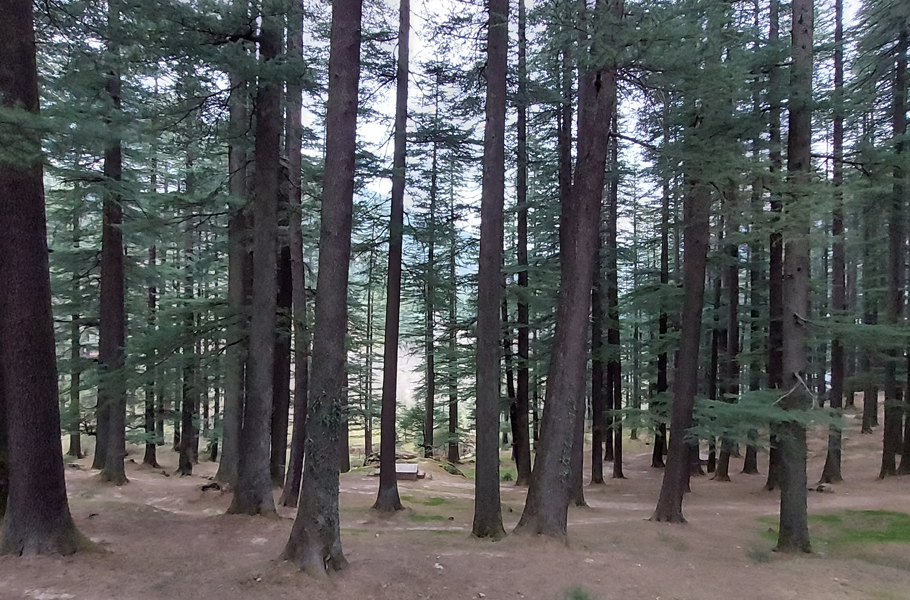
Environmentalists are upset over a possible move by Karnataka to allow 24x7 mining in forest areas, apparently with a view to shore up revenue collection. File photo
Climate change is making trees bigger, but also weaker: Study

As global temperatures rise, trees in colder areas are benefiting from an extended growing season. A longer growing season results in thicker growth rings and, as a result, higher overall wood production.
However, studies suggest that longer growing seasons contribute to weakening the wood, making trees structurally weaker. The poor quality of wood means that trunks break more easily.
We are forest ecologists who specialise in the anatomy and growth of wood. Let us examine the most recent scientific studies available to try to map the future of our forests and analyse how the changing growing season is determining the characteristics of the wood produced.
Also read: More trees can reduce deaths from soaring temperatures: Lancet study
Wood: What is it?
Wood is the product of the progressive accumulation of cells – xylem cells – in trees. The purpose of this accumulation is to renew the sap transport system and to provide mechanical support for the stem (trunk), branches and leaves.
A tree ring is the product of a growing season which, in temperate and boreal environments, runs from spring to autumn. Each year a new growth ring is formed. The thickness of a ring is dependent on a combination of factors inherent to the tree (its species and genetic factors) and environmental factors (such as soil type, sun exposure, climate and competition between neighbouring trees).
In some species, especially in conifers, it can be quite easy to distinguish the rings from each other. This is due to the fact that during the growing season the tree produces two types of wood, characterised by cells with different forms and functions.
In spring, the tree produces many large, light-coloured cells with a thin cell wall. This part of the annual ring is called earlywood. In late summer, growth slows down. The cells become smaller, but their walls become thicker. This latewood is the darker portion of the annual ring.
The characteristics of the cells of wood are particularly important and are of great interest in ecological and economic terms. First of all, wood cell walls stock most of the carbon assimilated from the atmosphere by trees. Thus, a thicker cell wall means the tree is absorbing a greater amount of carbon. Secondly, the ratio of the number of earlywood cells to latewood cells determines the density of the wood, and, therefore, its potential use and material value.
Also read: Top NASA official pushes for India to join the Artemis Accords
Trees are growing faster
Over the past century, in the temperate regions of North America and Europe, trees have shown a faster growth rate, up to 77 per cent higher than in the previous century. This increase is related to the production of thicker growth rings.
At first sight, faster growth could be interpreted as higher biomass production, which would lead to a higher carbon storage capacity and, therefore, a greater contribution of our forests to the fight against climate change. In other words, a higher growth rate could mean that more wood would be available for our different needs.
But as William Shakespeare wrote: Oft expectation fails, and most oft there where most it promises.
Trees die younger
A study by the Technical University of Munich in Germany analysed the growth rate of trees and the characteristics of their wood over the last century. They found that as the growth rate increased, the density of the wood dropped by eight to 12 per cent.
Furthermore, as wood density decreased, their carbon content also decreased by about 50 per cent. This suggested that the trees extracted less carbon dioxide (CO2) from the atmosphere. In addition to a reduced capacity to absorb and store atmospheric carbon, reduced wood density can weaken the structural strength of the stems.
Wood fulfils the important function of supporting trees. Reducing its density is therefore accompanied by a lower resistance to mechanical stresses that might come from wind or the effect of gravity on steep slopes. To complicate matters further, another recent study has shown an association between growth and lifespan in trees: fast-growing trees have a shorter life expectancy.
Also read: Over 50 per cent of world’s largest lakes losing water: Study
Too much is not enough
In our latest study, we quantified the relationships between the length of growing season, productivity and wood cell characteristics in balsam fir.
The study confirmed that trees with a longer growing season produce more wood cells and a thicker growth ring. However, higher growth also corresponds to a change in the ratio between the amount of earlywood and latewood.
For every day that the growing season length increased, the trees produced one more cell of earlywood. The increase in the ratio between earlywood and latewood is reflected in the decrease in wood density. This shows that an increase in volume growth does not necessarily correspond to a higher biomass production.
What does the future hold for our forests?
The global average temperature has exceeded the pre-industrial average by about 1.15°C (1850-1900), and is expected to rise further in the coming years.
Warmer temperatures could lengthen the growing season of trees and consequently increase their growth rate. While, on the one hand, this may lead to an expansion of forests globally, the rate of carbon uptake from forests is likely to decrease.
Also read: US astrophysicists say NASA’s Kepler discovered a trio of exoplanet
Although our forests will make a substantial contribution to the fight against climate change, the results of these studies are further evidence that environmental problems cannot be solved without taking direct action on the causes that trigger global change.
In the context of climate change, reducing the anthropogenic emissions that cause global warming is not something we can afford to negotiate or postpone.

